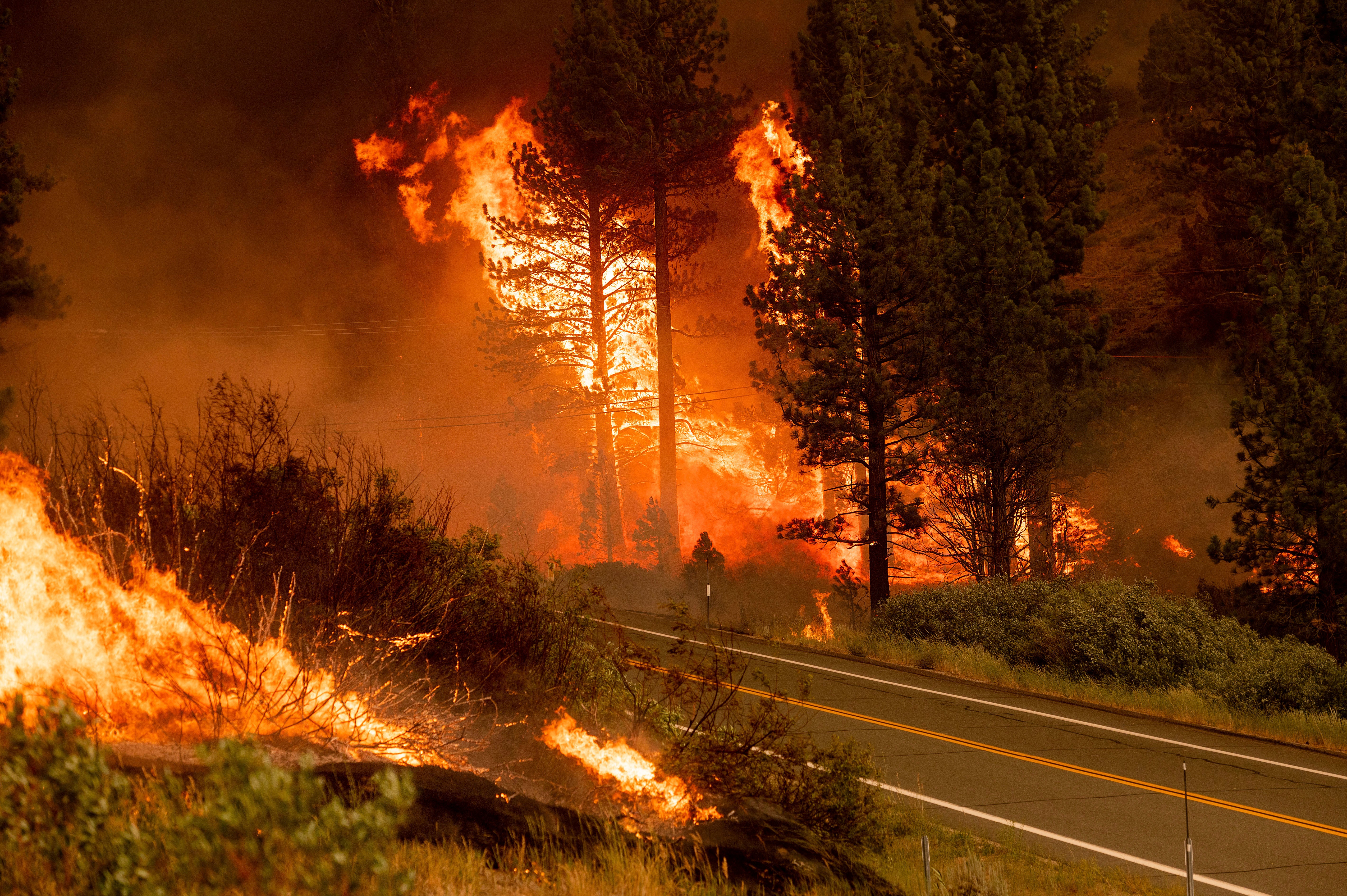Dangerous conditions complicate wildfire fight in western US
Erratic winds and parched Oregon forests added to the dangerous for firefighters on Monday as they battled the largest wildfire in the United States

Your support helps us to tell the story
From reproductive rights to climate change to Big Tech, The Independent is on the ground when the story is developing. Whether it's investigating the financials of Elon Musk's pro-Trump PAC or producing our latest documentary, 'The A Word', which shines a light on the American women fighting for reproductive rights, we know how important it is to parse out the facts from the messaging.
At such a critical moment in US history, we need reporters on the ground. Your donation allows us to keep sending journalists to speak to both sides of the story.
The Independent is trusted by Americans across the entire political spectrum. And unlike many other quality news outlets, we choose not to lock Americans out of our reporting and analysis with paywalls. We believe quality journalism should be available to everyone, paid for by those who can afford it.
Your support makes all the difference.Erratic winds and parched Oregon forests added to the dangers for firefighters on Monday as they battled the largest wildfire in the U.S., one of dozens burning across several Western states.
The destructive Bootleg Fire was considered one of the largest in modern Oregon history and was burning more than 476 square miles (1,210 square kilometers), an area about the size of Los Angeles The blaze just north of the California border was 25% contained.
Meteorologists predicted critically dangerous fire weather through at least Monday with lightning possible in both California and southern Oregon.
“With the very dry fuels, any thunderstorm has the potential to ignite new fire starts,” the National Weather Service in Sacramento, California, said on Twitter.
Thousands of people were already facing evacuation orders, including some 2,000 people residing in the largely rural areas of lakes and wildlife refuges near the fire, which has burned at least 67 homes and 100 outbuildings while threatening many more.
Extremely dry conditions and heat waves tied to climate change have swept the region, making wildfires harder to fight. Climate change has made the West much warmer and drier in the past 30 years and will continue to make weather more extreme and wildfires more frequent and destructive.
Firefighters said in July they were facing conditions more typical of late summer or fall.
Pyrocumulus clouds — literally translated as “fire clouds” — complicated containment efforts for the Dixie Fire in northern California on Sunday, as well as flames that spread to remote areas with steep terrain that are harder for crews to reach, officials said. New evacuation orders were issued in rural communities near the Feather River Canyon.
The Dixie Fire remained 15% contained and covered 29 square miles (74 square kilometers). The fire is northeast of the town of Paradise, California, and survivors of that horrific fire that killed 85 people watched warily as the blaze burned.
A growing wildfire south of Lake Tahoe jumped a highway, prompting more evacuation orders, the closure of the Pacific Crest Trail and the cancellation of an extreme bike ride through the Sierra Nevada.
The Tamarack Fire, which was sparked by lightning on July 4, had charred about 28.5 square miles (74 square kilometers) of dry brush and timber as of Sunday night. The blaze was threatening Markleeville, a small town close to the California-Nevada state line. It has destroyed at least two structures, authorities said.
A notice posted Saturday on the 103-mile (165-kilometer) Death Ride’s website said several communities in the area had been evacuated and ordered all bike riders to clear the area. The fire left thousands of bikers and spectators stranded in the small town and racing to get out.
Kelli Pennington and her family were camping near the town Friday so her husband could participate in his ninth ride when they were told to leave. They had been watching smoke develop over the course of the day, but were caught off guard by the fire’s quick spread.
“It happened so fast,” Pennington said. “We left our tents, hammock and some foods, but we got most of our things, shoved our two kids in the car and left.”
About 800 fire personnel were assigned to battle the flames by Sunday night, “focusing on preserving life and property with point protection of structures and putting in containment lines where possible,” the U.S. Forest Service said.
A fire in the mountains of northeast Oregon grew to more than 18 square miles (48 square kilometers) by Sunday. The Elbow Creek Fire that started Thursday has prompted evacuations in several small, remote communities around the Grande Ronde River about 30 miles (50 kilometers) southeast of Walla Walla, Washington. It was 10% contained.
Natural features of the area act like a funnel for wind, feeding the flames and making them unpredictable, officials said.
There were about 70 active large fires and complexes of multiple blazes that have burned nearly 1,659 square miles (4,297 square kilometers) in the U.S., the National Interagency Fire Center said. The U.S. Forest Service said at least 16 major fires were burning in the Pacific Northwest alone.